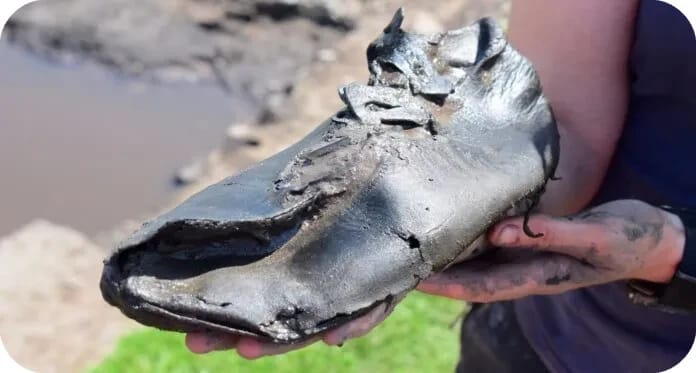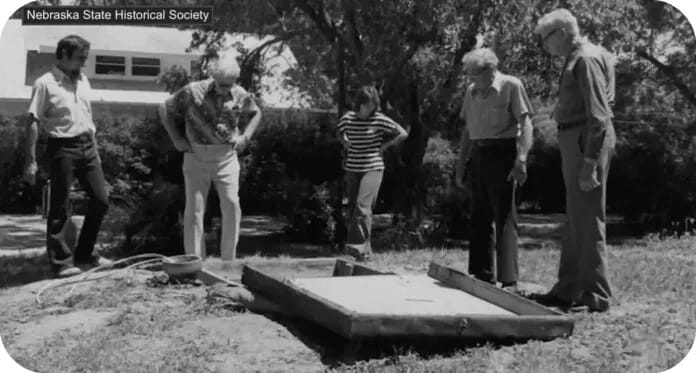- Daily Upsider
- Posts
- 🌞 The Future of Organ Healing
🌞 The Future of Organ Healing
Daily Upsider - Friday, July 11th, 2025
Friday, July 11th, 2025
Good Morning 🌞
Today, we share discoveries — some freshly made in labs and hospitals, others patiently waiting beneath layers of history. From notable medical advances to remarkable archaeological finds, this edition is a quiet celebration of human curiosity, persistence, and the things we’re still learning about ourselves and our world.
Here’s to ending the week with a bit of wonder.
Today’s Upside
Health Science
The Future of Organ Healing

Freepik
Researchers have discovered that a genetic switch for organ regeneration exists, successfully restoring damaged outer ears in mice. This groundbreaking study by the National Institute of Biological Sciences in Beijing focused on retinoic acid, a molecule derived from vitamin A. Scientists Wang Wei and Deng Ziqing found that mice unable to regenerate their ear pinna lacked sufficient retinoic acid. Remarkably, restoring retinoic acid levels led to complete regeneration, including cartilage. “They found that insufficient production of retinoic acid caused the failure of mouse and rat ear pinna regeneration. Exogenous supplementation of retinoic acid or activation of a rate-limiting enzyme in retinoic acid synthesis was sufficient to activate regeneration,” the researchers wrote.
While some animals, such as rabbits, goats, and African spiny mice, still naturally regenerate complex tissues like ear pinna, common rodents—including mice and rats—have lost this capability through evolution. The researchers deliberately chose the ear pinna because it contains multiple tissue types but remains simpler and easier to study compared to internal organs. Despite initial setbacks and failed attempts, the three-year experiment ultimately pinpointed the Aldh1a2 gene as the key enzyme responsible for retinoic acid synthesis. Scientists described their achievement as activating an “evolutionarily disabled genetic switch.”
Supported by Stereo-seq technology from BGI-Research, which allowed detailed mapping of cell changes and gene expression, the findings have significant implications. Researchers believe understanding how regeneration was gained or lost could significantly advance regenerative medicine. They caution, however, that regenerating human organs remains complex and distant due to significant differences between mouse and human biology. “Our findings may help in increasing understanding of the evolution of regeneration and provide a potential framework for dissecting mechanisms underpinning the failure of regeneration in different organs and species,” the study noted. Published in the journal Science, this discovery serves as a promising "proof of principle" for future research into organ regeneration.
History
A 2,000-Year-old Shoe

Huge leather shoes found at Magna Fort in Northumberland, England – The Vindolanda Charitable Trust / SWNS
A Roman legionary’s shoe, measuring an impressive 12.8 inches from toe to heel, has recently been discovered near Hadrian’s Wall, puzzling archaeologists. The unusually large leather footwear was among 32 shoes unearthed in May from an "ankle-breaker" trench at Magna Roman Fort in Northumberland. Remarkably, eight of these shoes measured over 11.8 inches—around a US size 14 or UK size 13. Archaeologist Rachel Frame speculated, “We have to assume it’s something to do with the people living here, having bigger feet, being potentially taller but we don’t know. Are the people living there from a specific region? Could that be why their shoes are so much larger?” Frame noted simply, “But at the moment, it’s sort of, well, this is unusual.”
This discovery stands in stark contrast to nearby Vindolanda, just seven miles away, where of the 5,000 shoes found since the 1970s, only four or five exceeded 12 inches, suggesting a smaller average size among inhabitants. The remarkably well-preserved shoes, thanks to low-oxygen soil conditions, also included children’s footwear, indicating that soldiers likely lived at Magna Fort alongside their families. The sheer volume of shoes at both sites has even led the Vindolanda archaeological trust to employ a dedicated "shoe specialist."
Dr. Elizabeth Greene, Associate Professor at the University of Western Ontario, highlighted the significance of the discovery: “Even from this small sample uncovered it is clear that these shoes are much larger on average than most of the Vindolanda collection.” She added, “Although we are comparing this new collection which has not yet gone through the conservation process with the Vindolanda shoes that have, even taking into account a maximum shrinkage of up to 1cm/10mm, it still means these shoes are very large indeed.” As excavations continue—currently only a quarter of the site has been explored—Magna and Vindolanda promise even more intriguing finds; recently, amateur excavators at Vindolanda uncovered a sculpture of the Roman winged goddess of victory, underscoring the ongoing archaeological significance of the area.
World News
50‑Year Capsule Unsealed

Harold Davisson created ‘world’s largest’ time capsule in Seward, Nebraska -1975 photo courtesy of Nebraska State Historical Society
Fifty years ago, a man invited the nation to deposit anything they liked into a large concrete vault he called the “World’s largest time capsule.” Last week, as heirs, descendants, and now-grown children watched the vault open in Seward, Nebraska, they saw just how remarkable the idea turned out to be. The vault contained a blend of nostalgic treasures and unique oddities, including letters, boxes, cassette tapes with personal messages, pet rocks, a patterned teal suit, and even a yellow Chevy Vega wrapped in plastic.
People traveled from across the country—from Virginia to Colorado—to claim or search for personal items left by themselves or family. Harold Davisson, the creator of the capsule, had meticulously planned this moment, and his daughter, Trish Davisson Johnson, proudly led the opening ceremony. “This is the culmination of 50 years of planning on the part of my father,” Johnson said. “There were packages from, I’m going to say, 3,000 people, letters and packages, letters to themselves, letters to the grandchildren, letters to their heirs.”
NBC News’ Maya Eaglin reported from the event, watching as a concrete pyramid—added later to reclaim the title of world’s largest time capsule—was lifted off with a crane. Stephanie Fisher, who traveled from Colorado, retrieved a cassette tape containing a message from her mother, remarking, “My parents didn’t think that they would be here 50 years later to retrieve it with us. So it’s pretty special to know that their voices [are] in there that I haven’t heard in a long time.” Chris Galen from Virginia recognized his mother’s handwriting on a letter wishing him a good education, career, and life, adding thoughtfully, “It’s not about what’s inside of it. It’s about what’s inside of us and who we were back in ’75 and who we are today.”
Support Daily Upsider!
Help our mission to share positive, meaningful news! Your support keeps us going without the need to bombard you with annoying ads!


Mind Stretchers
⁉️

Yesterday’s Mind Stretchers:
I have no tongue, yet sing in waves;
I hold no shape, yet carve out caves.
Restless, endless, deep and free —
What am I? — the sea! Debbie Ettinger got this correct first 🌞
Be the first to send us the correct answer for today’s mind stretcher for a shout-out with the answer tomorrow. Just send us the answer and your name to [email protected]or reply to the email.
From the Community
If you have any uplifting stories and experience you might want to share, send those over to [email protected] for the chance to be featured.
Reply